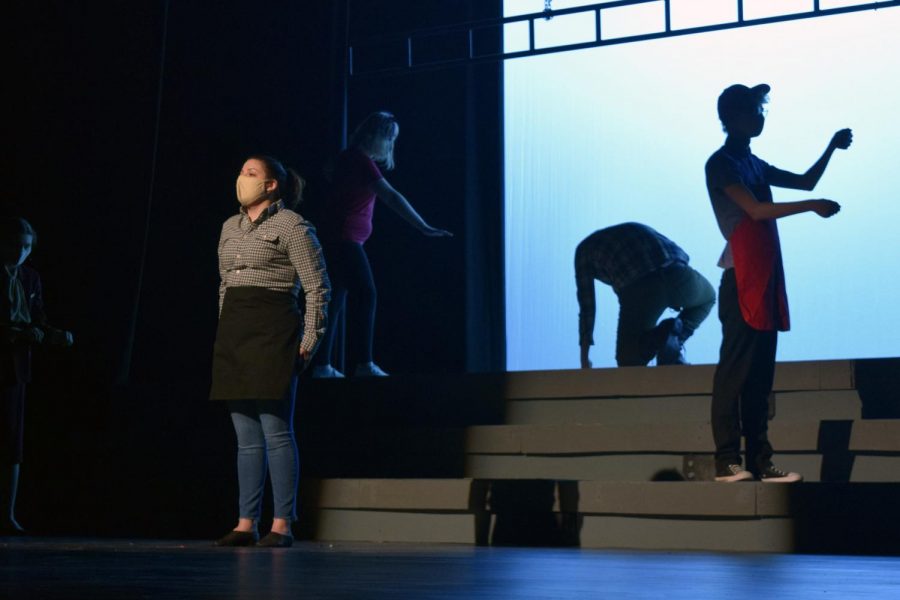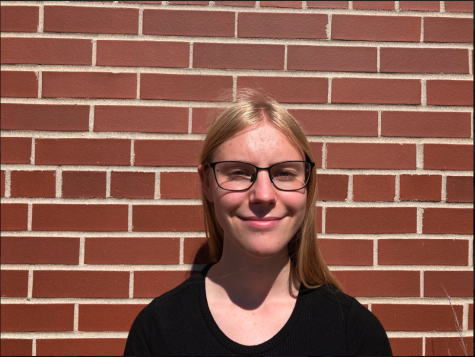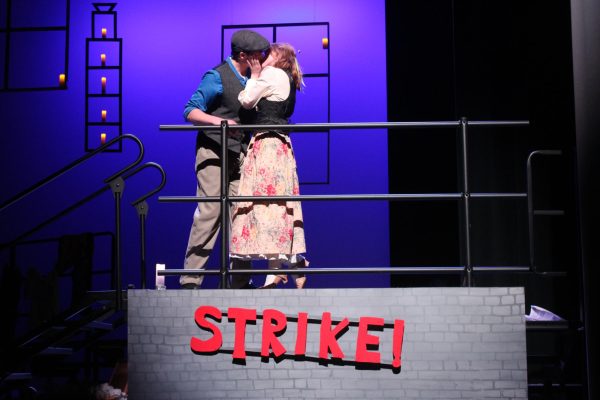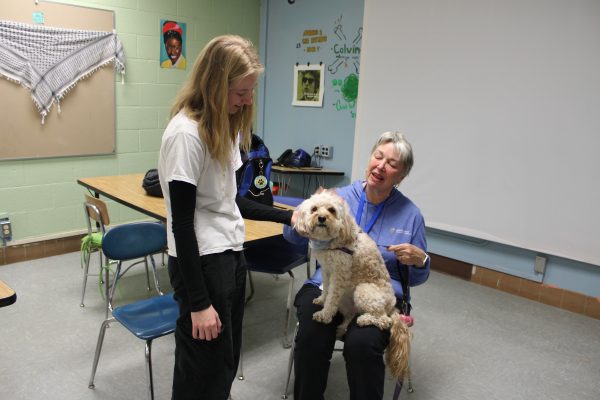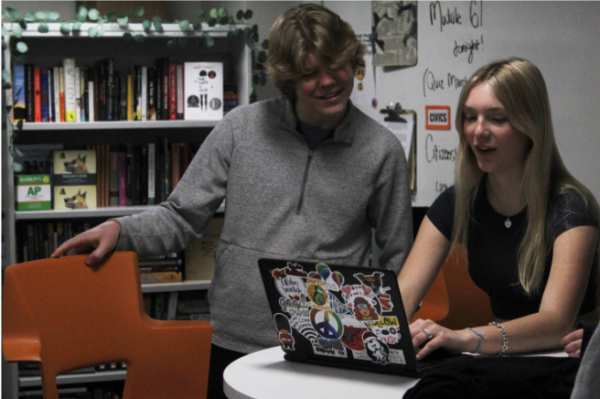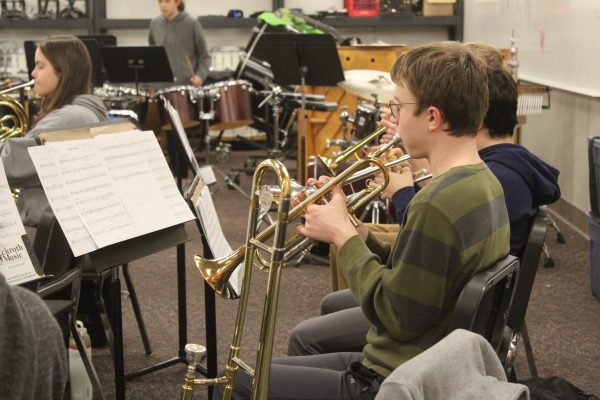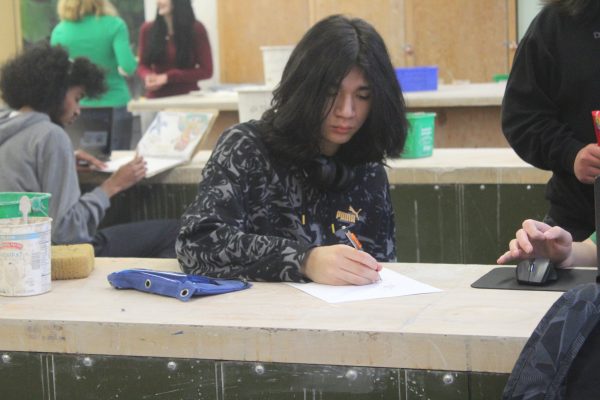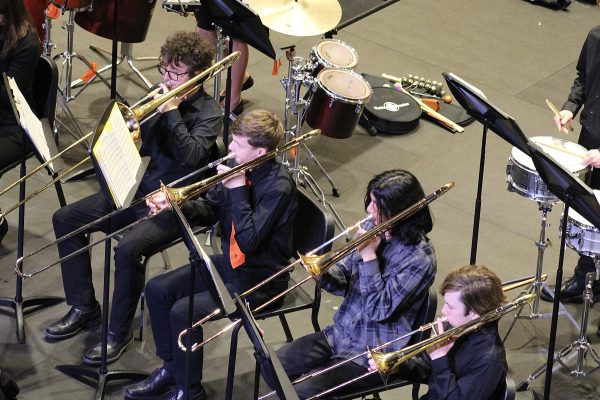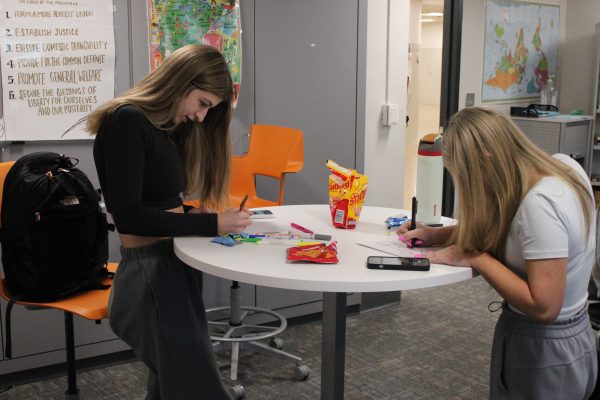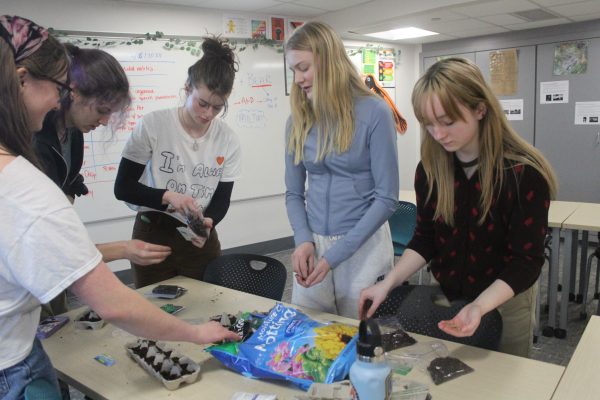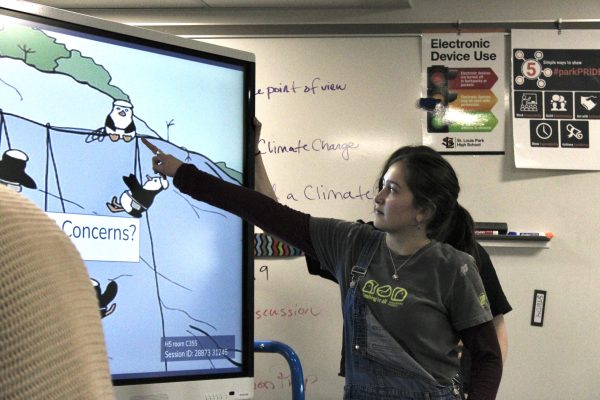Spring musical ‘Working’ will be livestreamed
Theater students grow from challenges
Actors in the spring musical, “Working,” perform their opening song. The musical is available to watch virtually April 23, 24 and 25 by purchasing a $10 ticket.
April 19, 2021
Park’s upgraded auditorium seats are eerily empty, but the new stage is finally blessed with actors. According to junior cast member Caroline Butler, performing for the first time in a year is exhilarating.
“It’s been a year since I’ve done live theater, and it’s really fun to be in the auditorium again, rehearsing and eventually performing,” Butler said. “Even though we won’t have a live (in-person) audience, we’ll get to perform on the stage, which is really nice.”
“Working,” a musical based on Stud Terkel’s book, will be livestreamed April 23–25. Tickets cost $5 for Park students and staff, and $10 for others. They can be bought in advance using ShowTix4U.
Theater director Jodi Schifsky said the musical includes an assortment of voices from American workers. The adaptability of the show lends well to COVID-19 precautions.
“We were looking for a show that would allow us to socially distance and to make cuts or revisions in case we had any illnesses,” Schifsky said. “This is a collection of monologues and songs that allows us that flexibility. It’s a puzzle of different perspectives of the American people talking about how their jobs represent their humanity.”
It’s a testament to the passion and spirit of the cast and crew that we want to put on a show, no matter what format it takes on.
— Jodi Schifsky
According to junior lighting technician Shira Hanovich, the new lighting technology is a major improvement, but it was difficult to comprehend at first.
“Our old lightboard was pretty ancient … Now, we have buttons assigned to every single light that can also turn colors and do all sorts of fancy stuff, which is really cool. It’s going to have some great performances because now we can actually make things atmospheric,” Hanovich said. “But, it didn’t come with a manual. It’s a huge learning curve.”
Butler said this unique musical prompted her to contemplate the real stories adapted into the show.
“I’ve never done a show like this. It’s basically non-fiction. All the monologues are direct quotes from actual people,” Butler said. “I think it’s really interesting portraying real people and thinking about how all the characters you’re playing have a real counterpart.”
Hanovitch said she feels elated to witness the complete performance and work more with the actors.
“I’m so excited to see it all come together in one piece. We’re never there at the same time as the actors, so I really have no idea what it’s going to look like until (the performance),” Hanovich said.
According to Schifsky, COVID-19 precautions have been a challenge but also an opportunity for growth. The resiliency of theater students proves their strength.
“We’re still requiring mask-wearing … We can’t have physical touch, so we have to recreate the story in a way that allows people to be spaced out, but still feels cohesive,” Schifsky said. “We’ve learned a lot about resilience. We’ve overcome things. It’s a great lesson in being adaptable, and it’s a testament to the passion and spirit of the cast and crew that we want to put on a show, no matter what format it takes on.”



